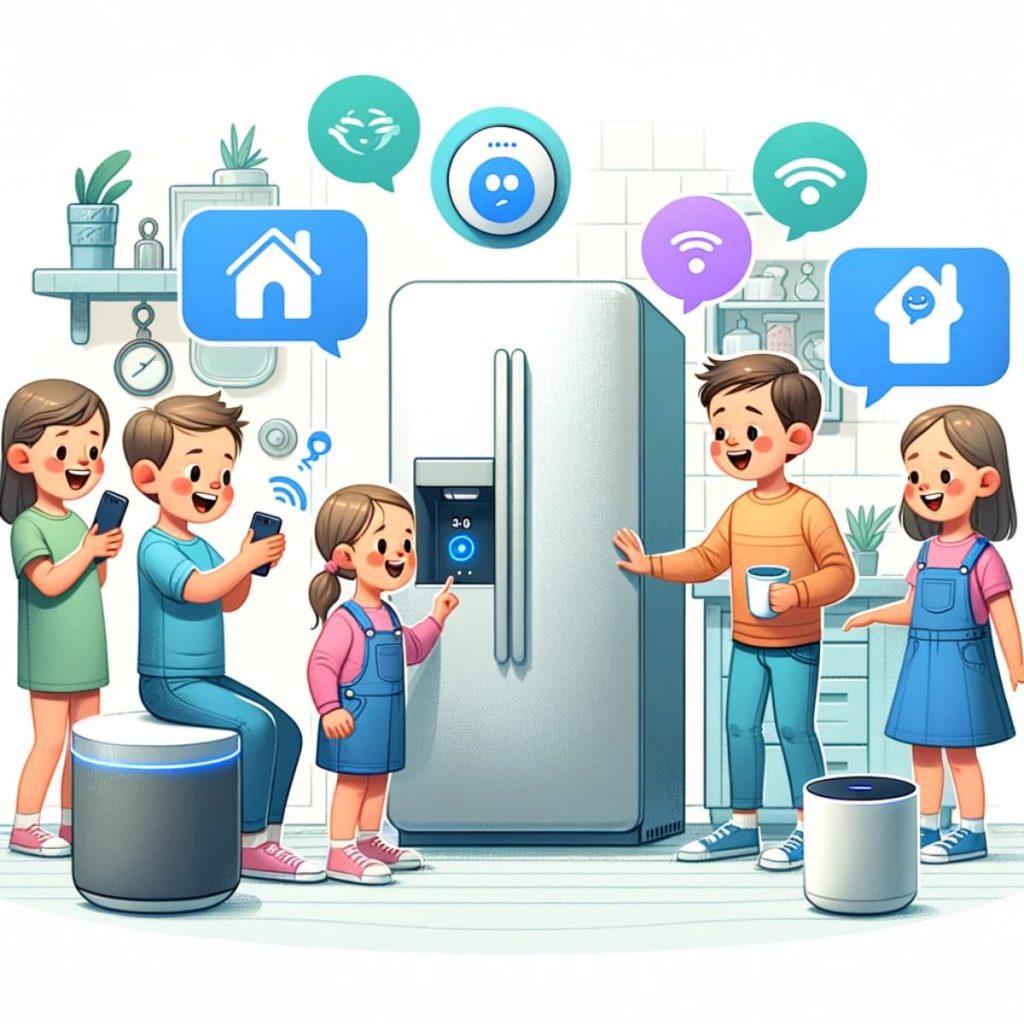Voice assistants have become integral to modern smart homes, offering convenience and enhanced functionality.
However, when it comes to families with children, the need to childproof these devices is paramount for safety and privacy.

This comprehensive guide will delve into how to make voice assistants child-friendly and secure.
Key Takeaways
- Understanding the unique challenges of voice recognition in children.
- Steps for configuring voice assistants for child safety.
- Importance of parental controls in voice assistants.
Voice assistants like Alexa and Google Assistant are increasingly common in households.
However, their default settings may not always be suitable for children. Childproofing these devices is essential to prevent inappropriate content access and ensure privacy.
Quick Navigation in this Resource
- 1 Understanding the Basics of Voice Assistants
- 2 The Challenges in Voice Recognition for Children
- 3 Setting Up Voice Assistants for Child Safety
- 4 Parental Controls and Filters
- 5 Integrating Voice Assistants with Educational Tools
- 6 Advanced Features for Enhanced Safety
- 7 Common Concerns and Solutions
- 8 FAQs on Childproofing Voice Assistants
Understanding the Basics of Voice Assistants
Voice assistants respond to vocal commands, providing information, playing media, and controlling smart home devices.
Their growing presence in homes necessitates a deeper understanding of their operation, especially in homes with children.
The Challenges in Voice Recognition for Children
Children’s speech patterns differ significantly from adults, making it challenging for standard voice recognition technology to accurately interpret their commands.
Adjusting these systems to recognize and respond appropriately to children’s unique speech patterns is crucial.
There is an effort to improve the voice technology with the hope of including a wide variety of children speeches.
Setting Up Voice Assistants for Child Safety
To make voice assistants child-friendly, it’s essential to configure their settings appropriately.
This includes customizing wake words and enabling child-friendly modes.
Parental Controls and Filters
Parental controls in voice assistants help filter explicit content and restrict web access. These settings are critical in managing what children can access through these devices.
This guide serves as a starting point for parents looking to make their voice assistants safe and suitable for their children.
Integrating Voice Assistants with Educational Tools
Voice assistants can be powerful educational tools for children. They can aid in learning languages, assist with homework, and provide interactive educational experiences.
However, it’s crucial to ensure the content accessed is age-appropriate and educational.
Advanced Features for Enhanced Safety
Recent advancements in voice recognition technology specifically cater to children’s unique speech patterns.
Features like custom wake words tailored for kids’ voices and content filtering ensure a safer interaction with voice assistants.
Common Concerns and Solutions
Parents often worry about privacy and inappropriate content when it comes to voice assistants.
Solutions include setting up strict privacy settings, using child accounts, and regularly reviewing the voice recordings.
Measures You Can Implement to Protect Your Child
To prevent children from operating your smart home voice assistants, consider implementing the following measures:
- Practice Using Voice Assistants and Mic Muting: Teach your children appropriate ways to use voice assistants and utilize the mic-muting feature on smart speakers to prevent unsupervised interactions.
- Look for Child-Safe Robots: Choose robots like vacuum cleaners that are safe for children. For lawnmowers, opt for models with child- and pet-friendly features.
- Keep Devices Out of Reach: Place devices like AC units, purifiers, and others on high counters or shelves to avoid children tampering with them.
- Mount Your Smart Speakers: Install smart speakers high up, like the Nest Mini 2nd-gen, where children can’t easily access them.
- Don’t Interrupt Sleep Cycles: Set up smart home routines considering children’s sleep patterns to avoid disturbances.
- Set Passwords and App Protections: Use passwords on smart devices and apps to limit children’s access to them.
These steps can help ensure your smart home remains safe and child-friendly
FAQs on Childproofing Voice Assistants
- How do I restrict inappropriate content on voice assistants?
- Utilize built-in parental controls and explicit language filters.
- Can voice assistants understand my child’s speech accurately?
- Modern voice assistants are increasingly adapting to understand children’s speech patterns.
- How can I use voice assistants to aid my child’s education?
- Explore educational apps and settings that integrate learning with voice command functionalities.
In conclusion, childproofing voice assistants is an ongoing process that involves understanding the technology, configuring settings for child safety, and staying updated with the latest features and advancements.
By taking these steps, parents can ensure a safe and educational environment for their children in a smart home.